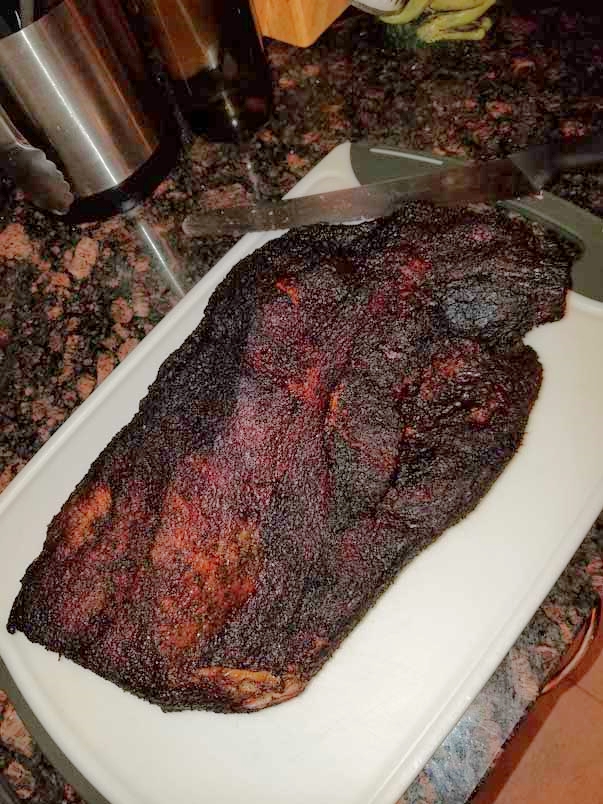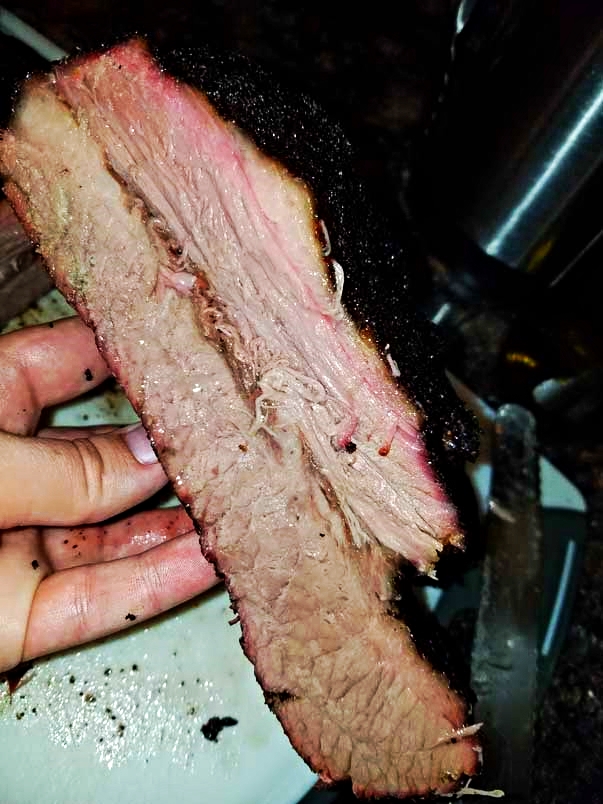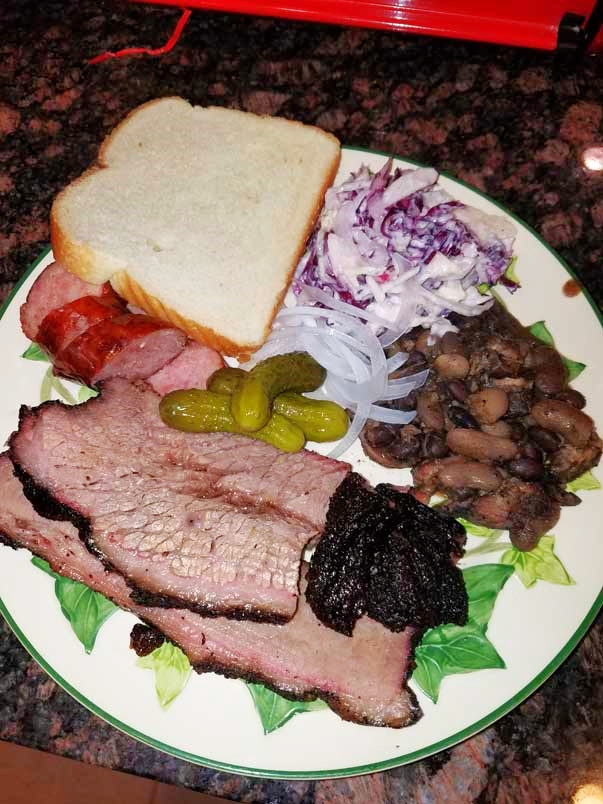Smoked Brisket
/BBQing is probably my favorite way to cook. The process of turning a cheap/tough cut into something absolutely delicious is extremely satisfying; especially because it also involves having friends over and having a couple of beers while you tend the fire. A few years back, I was lucky enough to find an 18 inch Weber Smokey Mountain on craigslist for only $120. With a bit of work, I had the grill grates reconditioned and the smoker in great shape. I quickly started to produce some delightful smoked meats including chicken wings, turkeys, chickens, pork butt, sausage, and some of the best bacon I have even eaten.
Brisket has always been a daunting cut to me due to the time committment, slightly higher cost than other cuts, and the required attention and care it needs during the cook. The first time I tried cooking one I was a bit rushed for time and the final result wasn't as impressive as I had hoped. I've followed Aaron Franklin for years now and just recently purchased his book, Franklin BBQ: A Meat Smoking Manifesto. The first chapter inspired me to give brisket another go and I'm sure glad I did.
I started by purchasing an entire packer brisket at Sam's club. I only had two choices, a 13.5lb brisket and a 20.5lb behemoth. Since my smoker is on the smaller side, I opted for the 13.5lb, which ended up fitting perfectly. Ideally I would have liked a 10-12lb. If you buy from a wholesale club, be sure to double check the price!!! After leaving the store I realized they had priced the whole packer as a flat, a leaner cut of the brisket that is separated from the fattier point cut and sold on its own! Since this was a $4.99/lb vs a $2.49/lb difference, it was worthwhile to go back and get it price adjusted.
The night before the cook, I pulled the brisket out of its packaging and gave it a trim. I followed Aaron Franklin's notes but essentially it came down to cutting off the large chunks of fat, removing any silver skin from the bottom of the brisket, making sure the layer of fat on the top was consistently 1/2 to 1/4 inch thick, and generally cleaning up the brisket so it didn't have any big chunks of meat hanging from it. I also cut a sizeable chunk that was hanging off the top of the point and smoked that on it's own to make some extra burnt ends.
Trimmed Packer Brisket
I planned for 1 to 1.5 hours per pound, and a dinner time around 5:30pm, so I woke up around 4:30am and fired up my smoker using the Minion Method outlined at virtualweberbullet.com. When the Weber Smokey Mountain is started in this fashion, the heat is extremely consistent over a long period of cooking requiring minimal adjustments. The temperatures were still in the 225F to 250F range after over 12 hours of smoking! I like to use the Maverick Wireless Thermometer to keep track of the smoker and meat temperatures remotely. While the smoker was getting up to temperature, I applied the simple rub consisting of 1/4 cup Kosher salt and 1/4 cup coarse black pepper. I used an old spice container to sprinkle the rub evenly on all surfaces of the meat. Once the smoker was up to temperature I threw on a log of cherry wood (not the best for smoking brisket but it's all I had on hand), and put the brisket on the top rack, fat side up.



WIth the meat on the smoker, I let it cook for 3 hours before checking on it. After about 3 hours I checked on it and sprayed it with some Martinelli's Apple Juice. I sprayed it again an hour later and once more at 10:30am before I wrapped it. I wrapped the brisket at the internal temperature of ~168F. The butcher at the grocery store was nice enough to give me a sheet of butcher's paper. I wrapped the brisket, making sure I placed it back on the smoker with the fat side up for the remaining 4 hours. I pulled the brisket off when the thermometer probes slid into the brisket with no resistance and the internal temperature was 199F. I placed the cooked brisket on a cookie sheet, covered it with a towel, and put it in a large cooler to rest. A good pair of insulated BBQ gloves is extremely helpful since the fat and juices coming off the brisket are very hot. I use these gloves but any thermal gloves would work.
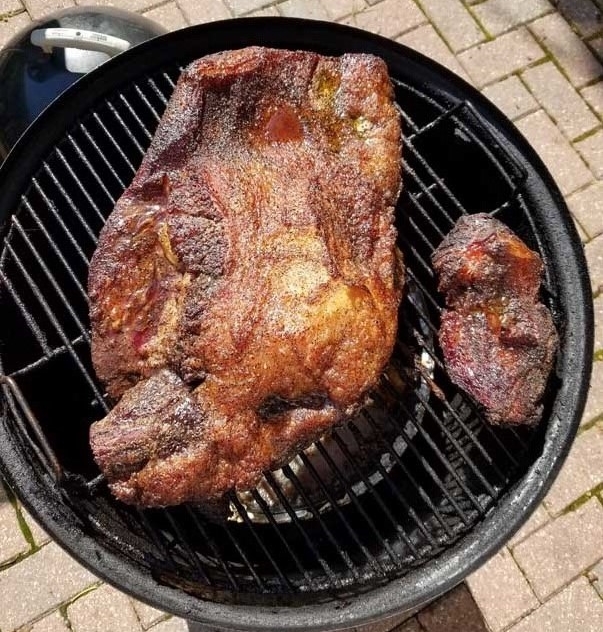
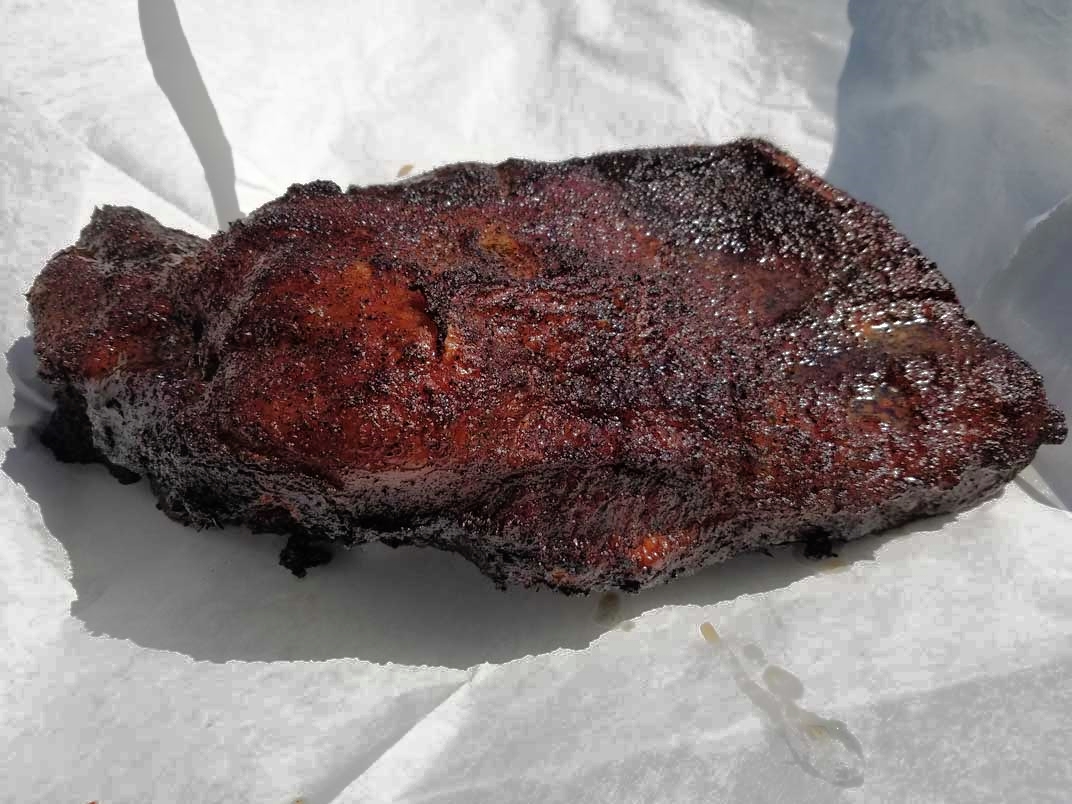
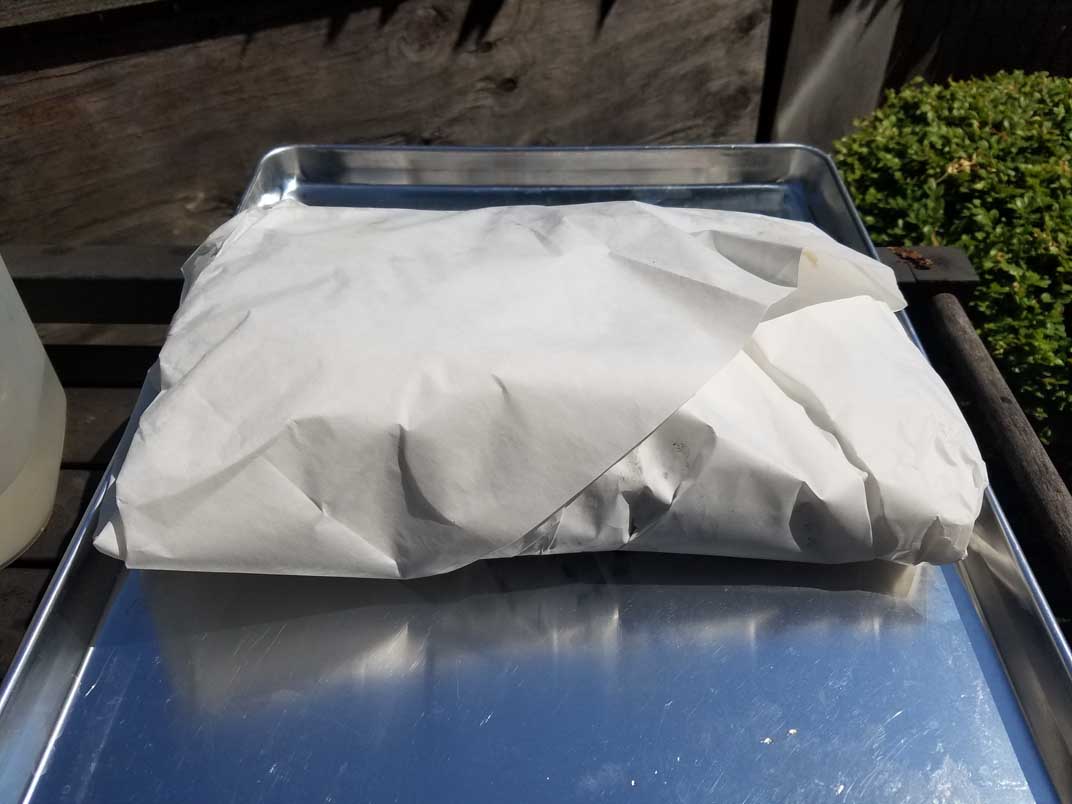
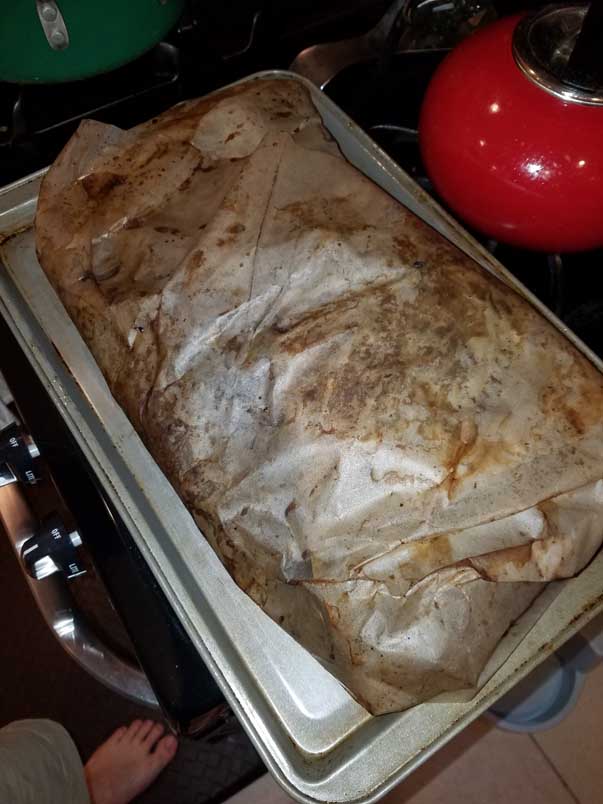
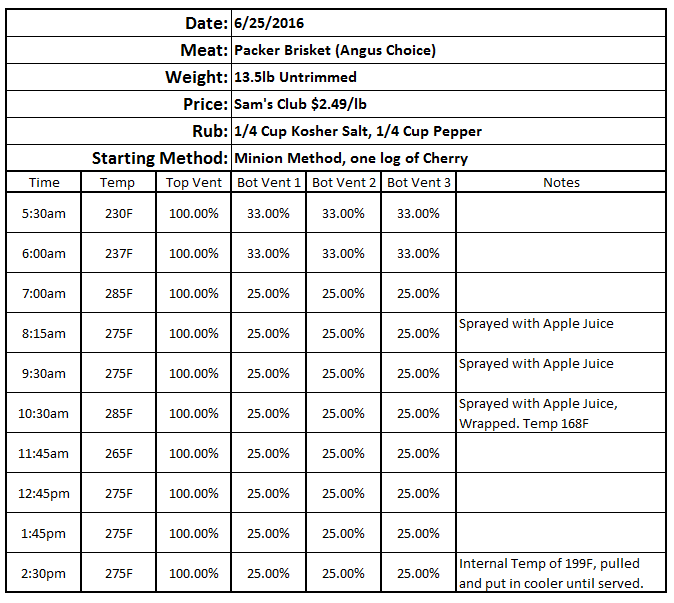
After resting in the cooler for about two hours, I pulled it out, unwrapped it, and sliced it against the grain for serving. The brisket turned out extremely tender and delicious. The fat was rendered wonderfully and was nice and sticky. The fatty cuts pair well with some thinly sliced onions, dill pickles, and a slice of white bread. I served each plate with a little bit of lean flat, fatty point, and some burnt ends. It's definitely a cut I will continue to cook in the future and no longer be afraid of!



